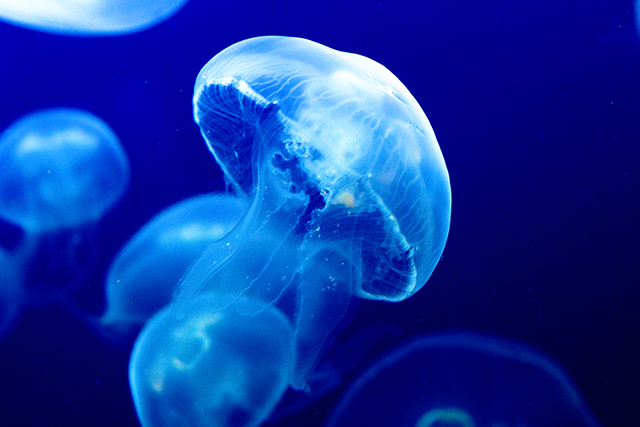
Scientists plan to eliminate microplastic using jellyfish mucus
Microplastic particles are tiny particles that measure less than one millimeter in size. They often come from the degradation of large plastic items or are produced industrially for human consumption. Microplastic particles end up at the bottom of the sea and are particularly challenging to remove. Even buoyant ones somehow find their way to the ocean floor and are consumed by marine animals, which endangers these creatures.
To solve the problem of microplastic pollution, researchers from the GoJelly project decided to investigate the ability of jellyfish mucus to bind microplastic particles.
When jellyfish reproduce or get stressed, they secrete mucus into the water. This mucus, according to a previous study, can capture and bind even nano-sized particles. This gave researchers the idea of making filters using jellyfish mucus to remove microplastic from the sea.
They began their experiments by first adding jellyfish mucus to a suspension of microplastic particles and mixing it. The results were not promising. The microplastic beads did not adhere to the jellyfish mucus. Because the previous study used a different species of jellyfish, the researchers suspect that the problem lies with their source of mucus. They are now preparing to conduct another set of experiments to determine the capabilities of mucus from nomad jellyfish -- the species they chose to work with.
Once they succeed in producing filters for microplastic, the researchers plan for their invention to be used in wastewater treatment plants and in factories where microplastic is produced. They hope that these biofilters can help prevent microplastic particles from getting into the waters.
“There are a few wastewater treatment plants that are currently testing methods to capture and remove nano- or microplastics from treated wastewater, but so far none has proven to be both reliable and cost-effective,” said Dror Angel, the leader of the GoJelly project.
Scientists are investigating other ways to use jellyfish mucus
Aside from making biofilters, the project partners are also looking for other sustainable uses for jellyfish. Their options include fish feed for aquaculture, fertilizers for agriculture, and collagen for cosmetic products. (Related: Jellyfish plaster found to help chronic wounds heal; the collagen helps new tissue grow.)
“We hope that not only we will widen our knowledge about jellyfish and their lives, but also lay the groundwork for innovative and environmentally friendly new products that will eventually create new jobs,” said Jamileh Javidpour, another researchers involved with the project.
Javidpour is currently busy preparing a jellyfish breeding farm in Kertminde, Denmark that will allow them to study jellyfish more extensively. Javidpour hopes to examine the possibility of using jellyfish for commercial purposes. The jellyfish farm is expected to be ready before the end of this year.
Jellyfish are consummate survivors. They once lived among dinosaurs and are one of the oldest organisms on Earth.
Jellyfish thrive in places where other marine organisms cannot. They reproduce fast and in great numbers, and they can fill ecological niches where there are cases of overfishing and ocean acidification. While they may be considered as pests, jellyfish may one day prove to be the answer to microplastic pollution that people have been searching for.
For more news and stories about jellyfish and their role in the environment, visit Environ.news.
Sources include:
Please contact us for more information.























